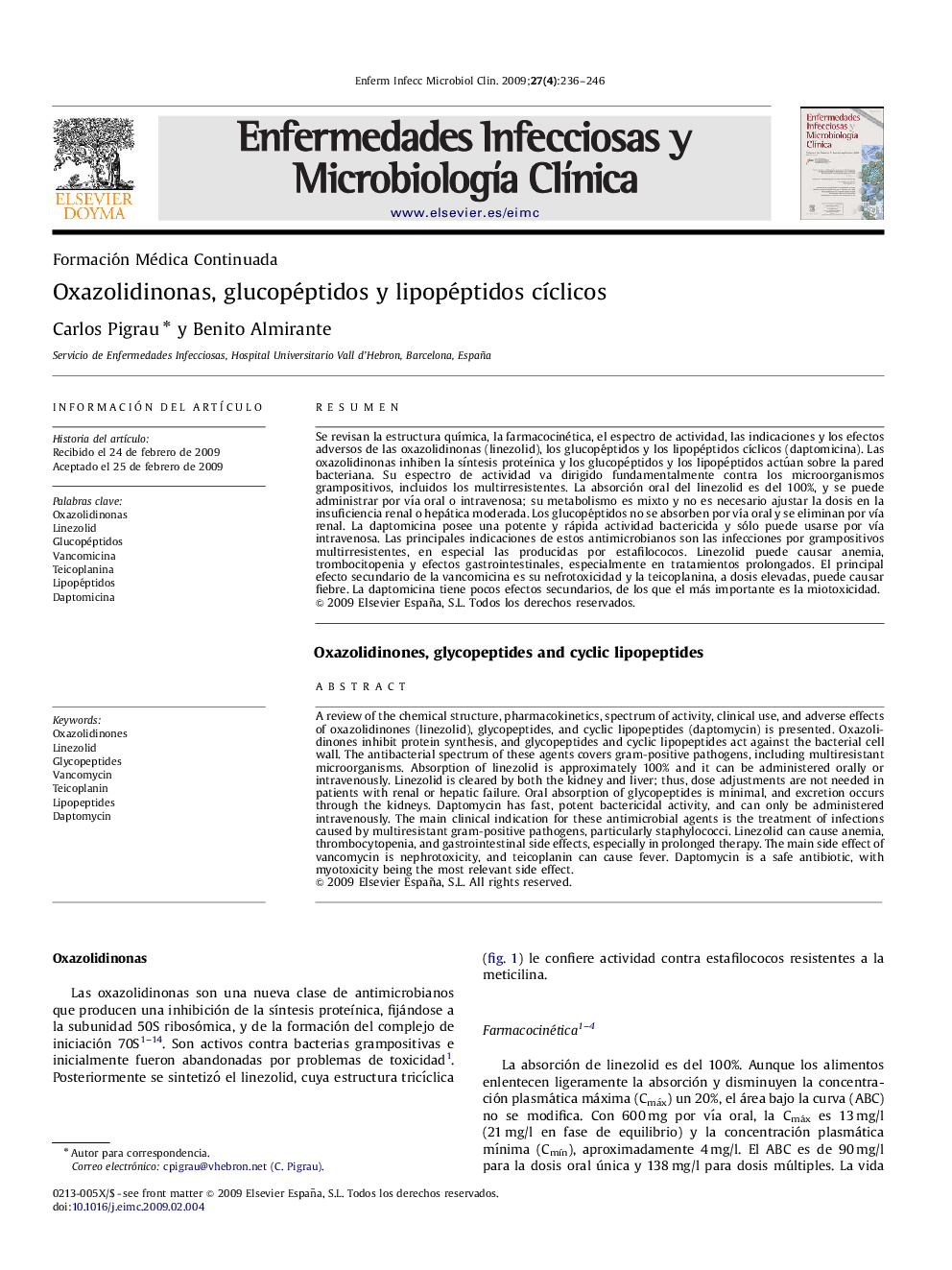| Article ID | Journal | Published Year | Pages | File Type |
|---|---|---|---|---|
| 3402460 | Enfermedades Infecciosas y Microbiología Clínica | 2009 | 11 Pages |
Abstract
A review of the chemical structure, pharmacokinetics, spectrum of activity, clinical use, and adverse effects of oxazolidinones (linezolid), glycopeptides, and cyclic lipopeptides (daptomycin) is presented. Oxazolidinones inhibit protein synthesis, and glycopeptides and cyclic lipopeptides act against the bacterial cell wall. The antibacterial spectrum of these agents covers gram-positive pathogens, including multiresistant microorganisms. Absorption of linezolid is approximately 100% and it can be administered orally or intravenously. Linezolid is cleared by both the kidney and liver; thus, dose adjustments are not needed in patients with renal or hepatic failure. Oral absorption of glycopeptides is minimal, and excretion occurs through the kidneys. Daptomycin has fast, potent bactericidal activity, and can only be administered intravenously. The main clinical indication for these antimicrobial agents is the treatment of infections caused by multiresistant gram-positive pathogens, particularly staphylococci. Linezolid can cause anemia, thrombocytopenia, and gastrointestinal side effects, especially in prolonged therapy. The main side effect of vancomycin is nephrotoxicity, and teicoplanin can cause fever. Daptomycin is a safe antibiotic, with myotoxicity being the most relevant side effect.
Related Topics
Life Sciences
Immunology and Microbiology
Microbiology
Authors
Carlos Pigrau, Benito Almirante,
